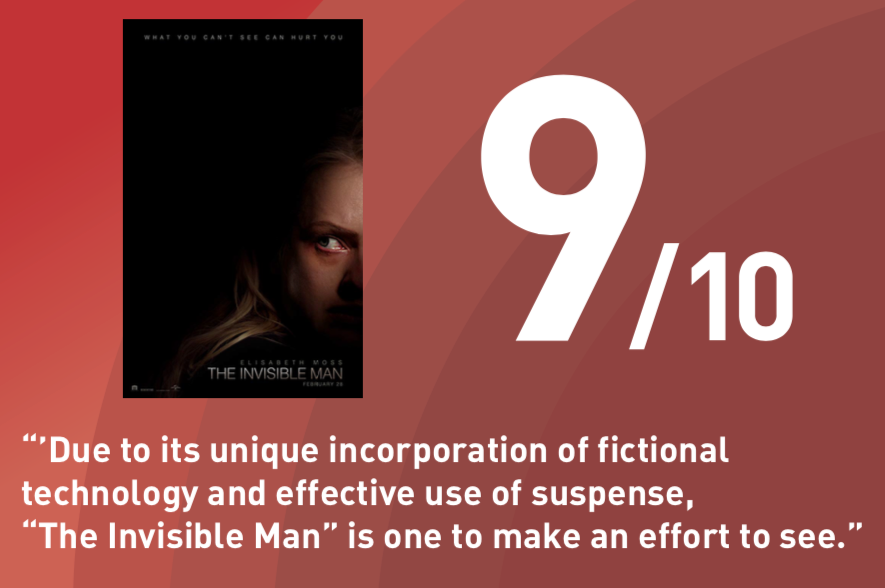“The Invisible Man” packs incredible suspense in an updated horror classic
February 28, 2020
By utilizing suspense and misdirection in the best ways possible, “The Invisible Man” gives audiences a modern and technological take on a horror classic.
Director Leigh Whannell’s “The Invisible Man” released in theaters on Friday. After the first 24 hours of release, the film nearly tripled its budget of $9 million with a box office earning of $23 million.
“The Invisible Man” follows Cecilia (Elisabeth Moss) as she becomes consumed with paranoia after the apparent death of her abusive boyfriend.
This 2020 film adaptation is a modern take on H.G. Wells’ novel of the same name.
Despite this film taking inspiration from the novel published in 1897, the 2020 version of “The Invisible Man” utilizes futuristic technology to create suspense never before seen by audiences, pun intended.
This movie takes the not-so-distant-future technology, similar to technology seen in Netflix’s “Black Mirror,” and uses it to push Moss’s character to her absolute limits.
Despite the appearance of fictional technology, this film also incorporates horrors that are all too real.
Cecilia endures the common affects of victim-blaming in this movie. Due to her having extreme paranoia and symptoms of post-traumatic stress disorder, she is shamed by the people around her for her emotional instability. With the additional allusions to the rape that Cecilia may have endured while held captive by her boyfriend, this film does not hold back on real-world dangers.
A common trope for horror movies is the over-abundance of jump scares. While “The Invisible Man” does have its fair share of jump scares, they differ from the trope in that they are all effective. None of these scares are predictable. Even if there is an obvious buildup of tension, the scare that happens is never what audiences think is going to happen, which includes incredibly sudden deaths of characters.
In addition to jump scares, “The Invisible Man” has an assortment of minor details and even references to other horror movies for keen-eyed fans to catch.
One such scene shows Cecilia investigating her sinking feeling of being watched. As she stands outside of her house, a small breathe of cold air can be seen behind her. As minor of a detail as this is, it still packs an emotional and scary punch.
Additionally, graffiti of “Jigsaw,” the main antagonist in the “Saw” series, can be seen towards the end of the film.
One noticeable drawback lies in the inconsistencies of the titular invisible man.
Cecilia and other characters attempt to fend him off and prove his existence by fighting him or throwing bed sheets over him, respectively. But, while neither of these tactics work in the first act of the movie, the second and third acts show glimpses of the invisible man when paint gets thrown on him or when he is otherwise injured. It’s a minor, but still immersion-breaking complaint.
Overall, Whannell’s directing and Moss’s incredible acting make this film stand out from the abundance of stalker-horror films. Due to its unique incorporation of fictional technology and effective use of suspense, “The Invisible Man” is one to make an effort to see.







